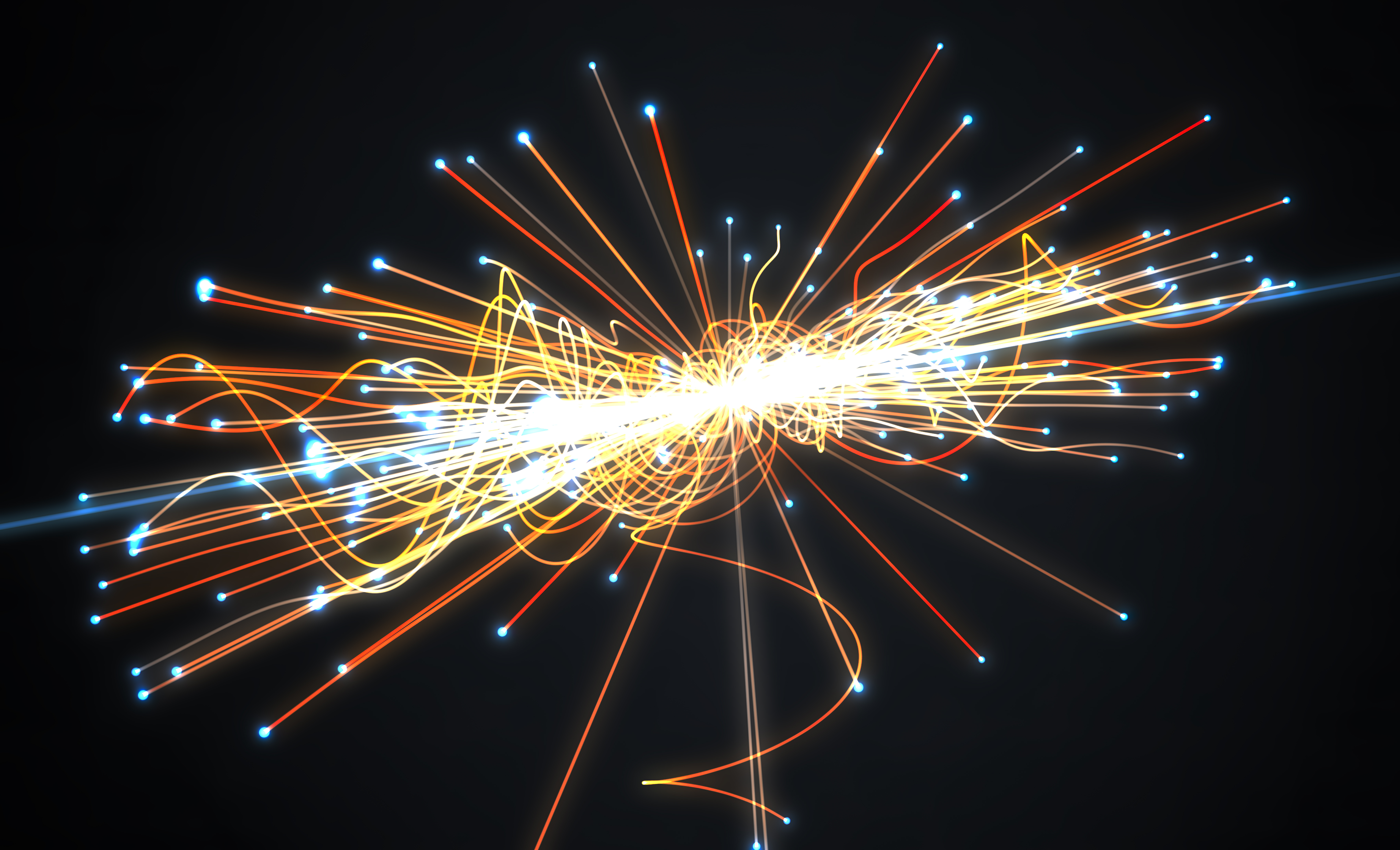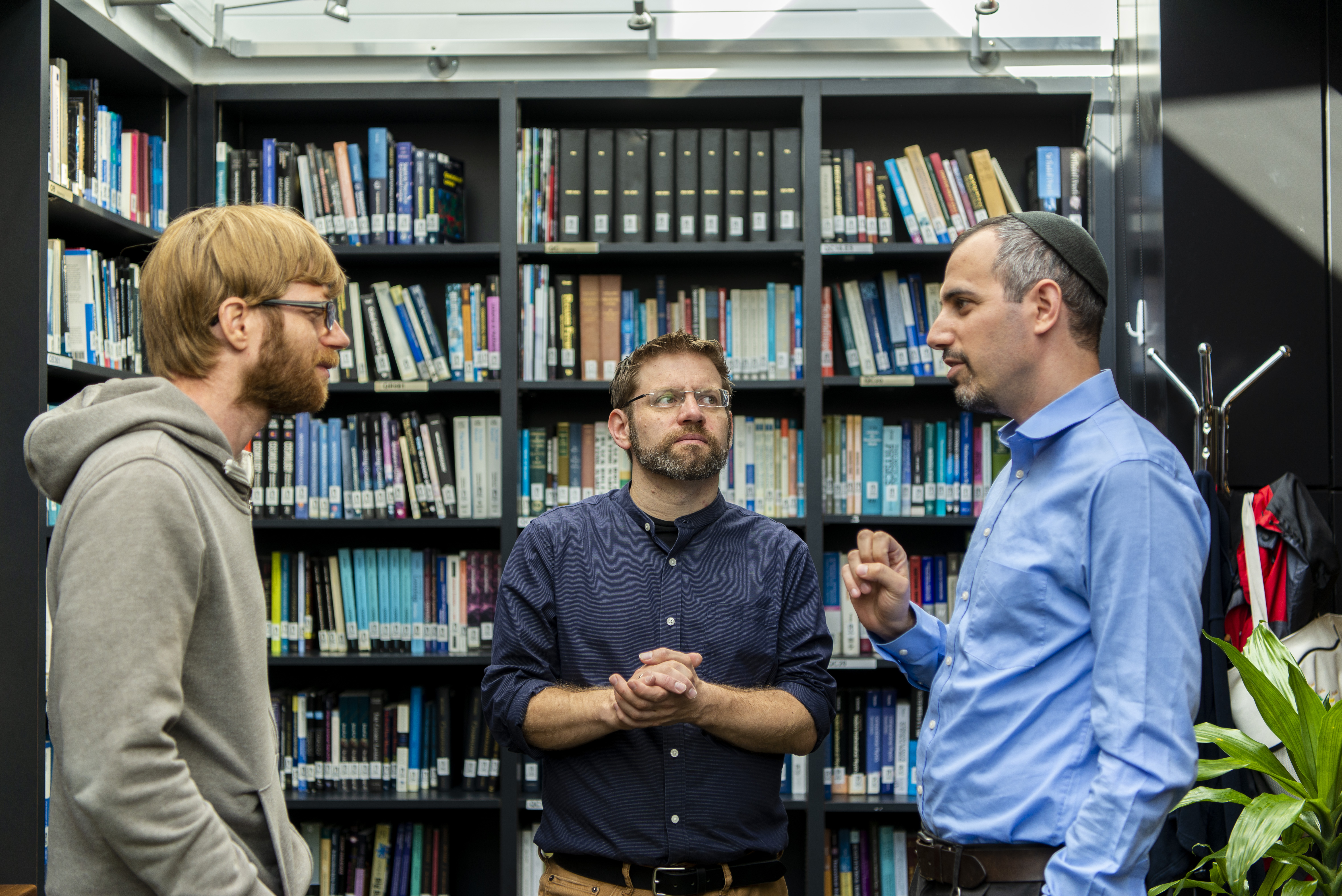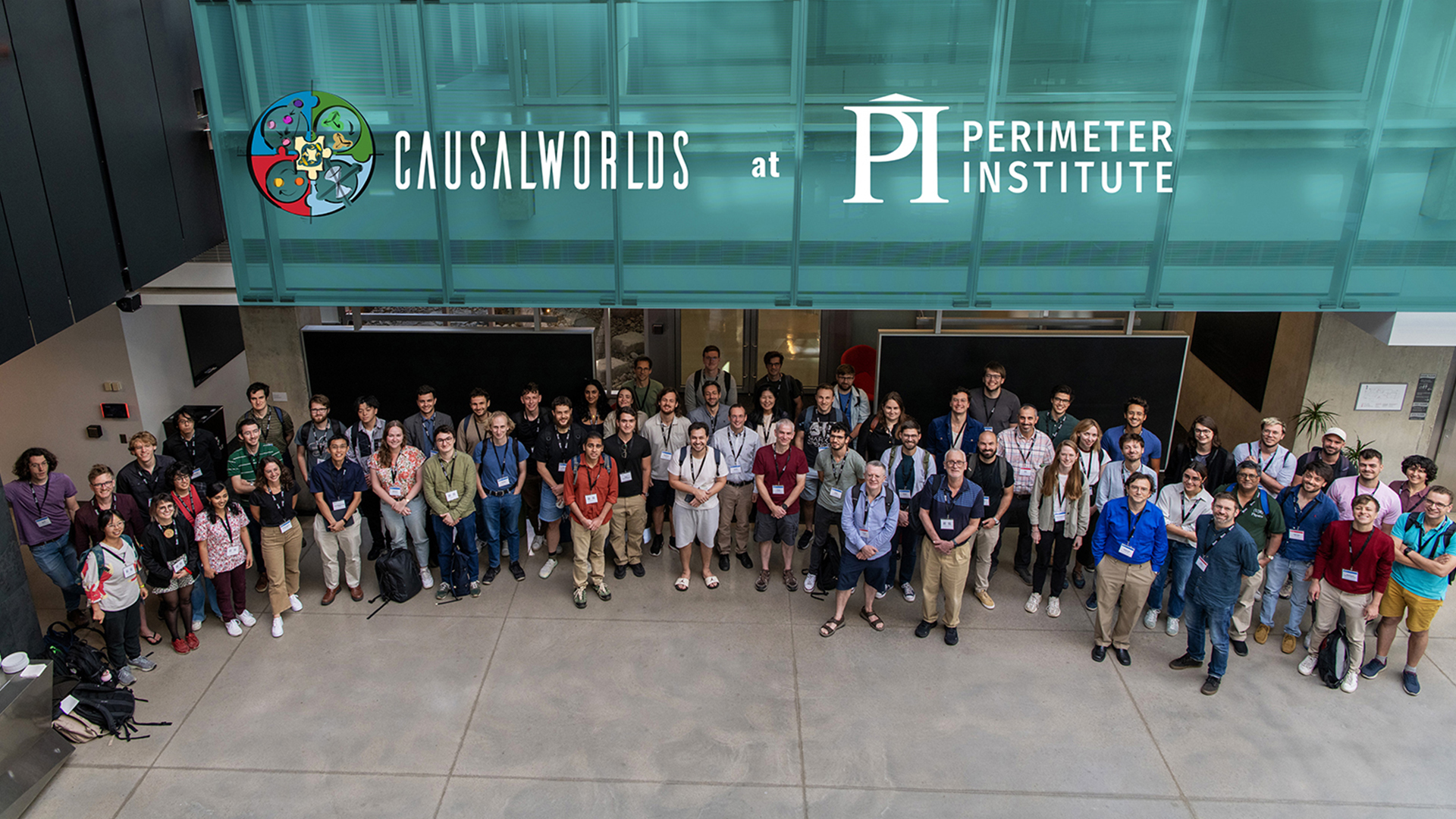Our world is ruled by causation.
You missed your bus because you overslept, because your alarm clock did not go off, because you forgot to set it, because you were tired. There is a cause, a logical order of A leading to B, embedded in every event, everywhere in our daily lives.
Of course, it is not always easy to sort out what caused what. There can be multiple possible causes for an event. Was the patient’s heart attack caused by his obesity, and to what extent did genetics play a role? What about other possible causes such as medications, or stress?
There is also the problem that correlations between events — say, a rise in shark attacks and a rise in ice cream sales — might have common causes (hotter weather and more people at the beach) but they are not causally connected. Correlation does not imply causation. Or, at least, not always.
Then, if we dive into the quantum realm of the very small, causation becomes more muddled still.
In quantum physics — where electrons, photons and other particles are described by probabilistic wave functions – there can be “superpositions” of multiple states. An electron can have a “spin” (analogous to angular momentum) that is in a superposition of “up” and “down,” something already being utilized in quantum computing.
There is also a strange property known as “entanglement,” which describes a particularly strong type of correlation between particles, even at a far distance.
Moreover, there are scenarios where quantum theory does not have an “arrow of time.” In the quantum realm, nature does not always care whether the chicken or the egg, A or B, came first.
So, can we even have a concept of quantum causation? If so, how is it different from everyday causation?
Those questions were being discussed by academics from around the world at the Causalworlds 2024 conference, hosted at Perimeter Institute in September.
Hlér Kristjánsson, one of the main organizers of the conference who was recently a postdoctoral researcher at Perimeter and is soon starting a position as an assistant professor at the Université de Montréal, says the conference brought together the various research communities — in both quantum and classical causation — “to see if we can learn something from each other, on the conceptual level as well as technical level in terms of techniques and methods.”
Some of the researchers are statisticians who probe “classical causal inference models.” This applies to those situations in our everyday world where there are multiple possible causes (such as what caused a recession). But there are also researchers, such as Rob Spekkens and Elie Wolfe, who are leading the quantum causal inference initiative at Perimeter.
It was John Stewart Bell who, back in 1964, sparked the whole field of quantum causal inference with his research into that strange property known as entanglement.
Quantum theory predicted that if a pair of subatomic particles, such as photons, are put into an entangled state, they would remain correlated, even when separated by vast distances. But there was always a chance that maybe there were other variables that would explain this prediction that Albert Einstein had derided as “spooky action at a distance.”
Bell demonstrated, mathematically, that the statistical correlations of entangled particles were stronger than could be explained by any other local, classical theory. In subsequent years, experiments proved Bell right. Three physicists — Alain Aspect, John F. Clauser and Anton Zeilinger — won the 2022 Nobel Prize for their experiments with entangled particles.
Researchers such as Spekkens and Wolfe are trying to understand the situations in the quantum realm where correlations might actually imply causation. This is quantum causal inference, and it has implications not only for making sense of the quantum realm, but also for technology.
Causal inference is a hot topic in the field of artificial intelligence (AI). The AI we have today is great at pattern recognition, such as spotting the tumours in a radiology image. But if causal inference techniques inspired by quantum theory can be used to develop algorithms that might help AI understand causation and make better decisions (such as in the example of what caused a heart attack), that would be a fantastic practical tool in health care and many other industries.
Another fervent area of study is indefinite causal order, something that would correspond to a quantum superposition of “A causing B” and “B causing A,” at the same time.
These researchers are looking at causation from the standpoint of the arrow of time. Here, the quantum realm can be very strange indeed. There is, for example, CPT symmetry in quantum field theories whereby C (for charge) and P (for parity or orientation in space) and T (for time) can be simultaneously reversed in the theory, without making any difference to the system.
So, in quantum theory, there does not appear to be an arrow of time.
Giulio Chiribella, now a professor at the University of Hong Kong and visiting fellow at Perimeter (where he was previously a postdoctoral researcher) spoke at the conference about the arrow of time, and about combining the notion of indefinite causal structure with our understanding of spacetime. The ensuing ideas might lead to new insights for the development of the long-sought-after theory of quantum gravity that will unify quantum theory with Einstein’s theory of gravity (general relativity).
But here, as well, there are also technological applications. Chiribella and his colleagues introduced, in a research paper, a procedure known as the quantum switch, a way of causing particles to experience both backward and forward causal orders simultaneously. Since then, in labs around the world, experimentalists have put superposed photons through this quantum switch procedure and the results indicate that it could make quantum computing and quantum communications more powerful.
V. Vilasini, a research scientist at Inria, University Grenoble Alpes, France, was one of the main organizers and founders of the Causalworlds conference series that started at ETH Zurich in Switzerland in 2022.
She is doing research that explores the intersection of quantum and relativistic causality using information-theoretic tools. “I’ve also been interested in applications like quantum cryptography in space and time, specifically in exploring what causality principles can reveal about the fundamental limits of cryptographic security, ” Vilasini says.
“Causalworlds was founded with the aim to bring together researchers from these diverse areas to build a shared language and facilitate the exchange of ideas across disciplines. This year, my co-organisers at the Perimeter Institute did an incredible job to make the second edition of the conference a great success,” she says.
“We are excited to see it continue to grow within the research community. At this year’s business meeting, it was decided that the next Causalworlds conference will take place in Grenoble, France in 2026, and that it will continue biennially. We hope to host future editions across different continents, making the event more accessible and inclusive globally,” she adds.
But what does all the research say about our common-sense notions of causality?
As Vilasini explains, causation may simply be different in the quantum realm. “We know that the moon affects the tides. In your theory, you can change the mass of the moon, move it around, and see how it affects the tides. But in quantum theory, the nature of the dependencies can be different. There is still the basic principle that you can change the parameters and observe the effects, but the way the mechanisms work will be different in quantum theory,” she says.
“It was fascinating to see the diversity of what causality means to people at this conference,” says Wolfe, the Perimeter research scientist who, with Spekkens, co-leads the quantum causal Inference Initiative.
“We associate causation with notions of time and the idea that all causes precede effects. But what if time is wobbly and spacetime is stretched? How does that challenge about our conceptions of causality?” Wolfe asks.
Quantum and classical causation may end up being very different.
“In my own work with Rob Spekkens and others, we are contrasting the predictions that involve (classical) common causes or confounders versus quantum systems with a quantum common cause, which is a shorthand for entanglement,” Wolfe says. “We can draw similar pictures and we use a lot of the same terminology, but it is a different underlying model because we are dealing with quantum mechanics,” he adds.
Spekkens, a Perimeter faculty member, says perhaps we need a paradigm shift in the way we think about causation, much as the world saw a paradigm shift in the way we think about spacetime after Albert Einstein developed his theories of relativity and gravity.
In the Newtonian framework, time is absolute. You can say to your local friends, “meet me at the restaurant at 6 p.m.,” and everyone will know exactly what you mean. But in 1905 Einstein showed time depends on your frame of reference. If you are travelling quickly in a spaceship, an hour will pass for you and everyone on that spaceship. But for an observer who is watching that journey from Earth, that hour might pass as years. In 1915, Einstein took that notion even further and showed how massive objects cause a distortion in spacetime that is felt as gravity. Unlike in Newtonian physics, notions of space, time and gravity became intertwined. This was an incredible paradigm shift. A whole new way of thinking.
The same may be true of quantum causation. “Just as we had to reconceptualize space and time in a slightly different way that deviated from our everyday notions, the idea would be that in quantum theory, the notion of causation is going to involve a deviation from those conventional everyday notions,” Spekkens says.
The conference enabled a collision of all these ideas. Yìlè Yīng, a Perimeter PhD student in quantum foundations, says it was a great opportunity to meet researchers in areas like indefinite causal order, something that she does not normally work in. “It was nice to meet all these researchers in different fields and to have those interesting discussions,” Yīng says.
Along with the formal talks by researchers studying different aspects of causality, there were also three “unconference” sessions where participants took part in informal discussions about various topics in the field. Jacopo Surace, a postdoctoral researcher in quantum foundations at Perimeter, says he learned a great deal from those unconference sessions. It was an opportunity for researchers and students to open up and express themselves, he says.
Spekkens says the community of researchers studying quantum causation is growing. “The number of people who are writing papers on this topic have grown recently, and they are coming at it from different angles.”
While this growing research community has yet to find a consensus as to what all of this says about the nature of reality, Spekkens is confident that the study of quantum causation will lead to new insights.
“In recent years, we have become more focused on causation, and there is a lot of progress. There is a buzz, with a lot of results, and questions. So, things are happening.”
About PI
Perimeter Institute is the world’s largest research hub devoted to theoretical physics. The independent Institute was founded in 1999 to foster breakthroughs in the fundamental understanding of our universe, from the smallest particles to the entire cosmos. Research at Perimeter is motivated by the understanding that fundamental science advances human knowledge and catalyzes innovation, and that today’s theoretical physics is tomorrow’s technology. Located in the Region of Waterloo, the not-for-profit Institute is a unique public-private endeavour, including the Governments of Ontario and Canada, that enables cutting-edge research, trains the next generation of scientific pioneers, and shares the power of physics through award-winning educational outreach and public engagement.






